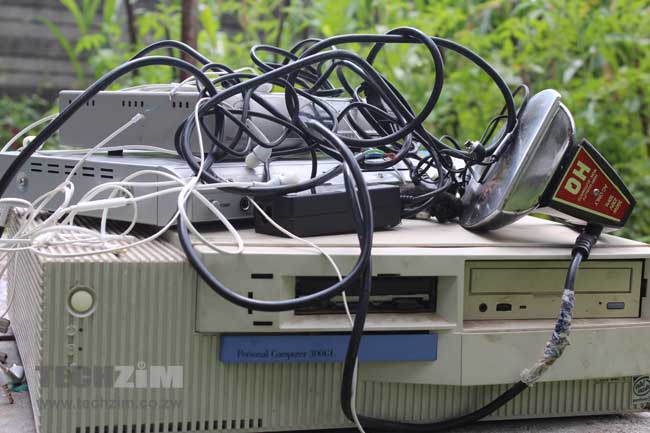New technologies and IT have never been more crucial for successful business operations, but there is a downside. This essential equipment generates substantial carbon emissions and waste, contributing significantly to the climate change crisis.
The upside to this, however, is that IT and technology assets can be a good place to start for organisations looking to reduce the environmental and social impact of their operations by implementing sustainable and circular economy practices that look to extend the useful life of IT equipment.
When done correctly, circular economy practices do not only reduce costs, but they also help companies meet the growing demands for sustainable solutions from environmentally conscious stakeholders, ranging from regulators and investors to staff and customers.
Zakhe Khuzwayo, co-founder and CFO of InnoVent Rental and Asset Management Solutions, highlights the substantial impact of tech and IT hardware on the environment and provides an overview of the sustainable IT solutions and circular economy practices that allow leading CIOs and IT departments around Africa to save money – and the planet.
The environmental and social impact of your company’s IT
Tech and IT assets contribute substantially to emissions, environmental degradation, and waste.
The carbon emissions of IT assets stem from the electricity used to power tech devices, which is generated mainly from non-sustainable and emissions-intensive sources like coal. In addition, substantial quantities of finite and precious resources are required to manufacture tech, and these are wasted when IT equipment becomes obsolete.
This obsolete tech is also a major contributor to the growing environmental risk of e-waste, amounting to a staggering 53.6 million metric tonnes (Mt) of e-waste generated worldwide in 2019 that contaminates the environment with toxic chemicals and heavy metals.
Sustainable IT management solutions
Implementing sustainable lifecycle management solutions and circular economy practices for IT assets, enabled by innovative business models can significantly reduce the negative impact of an organisation’s IT equipment on the environment.
These practices include procurement models designed to return and extend the life of IT equipment, tracking IT assets from purchase to end-of-life; refurbishing or remanufacturing equipment for a ‘second life’; and the responsible disposal of obsolete IT equipment.
Innovative business models enabling circular practices
Firstly, adopting innovative procurement models such as Hardware-as-a-Service, subscription, or leasing eliminates ownership of IT equipment by replacing outright device ownership with ‘access’ to equipment.
Leading OEMs and service providers who offer these solutions facilitate the transition to the circular economy by committing to keep equipment in circulation for longer.
Secondly, tracking all IT assets from purchase to the end of life stage, is crucial from a sustainability perspective. To achieve e-waste and corporate social responsibility (CSR) goals, there must be clear leadership in tracking exactly how many devices a business owns and how they are dealt with at end of life.
Businesses must understand the distinction between the end of first life hardware and non-functional end-of-life hardware. This concludes whether a device can be repurposed and resold or disposed of in an environmentally friendly way.
Finally, by using refurbished or remanufactured IT equipment through approved vendors, companies can also create a ‘second life’ for used tech. This keeps IT assets in circulation for longer, preserving natural resources used in the manufacturing process and reducing the amount of e-waste while providing these organisations with access to good quality second-life equipment for reuse with cost savings of between 30-50%.
To further reduce their contribution to the vast e-waste problem, responsible companies must also ensure obsolete IT is recycled or responsibly disposed of through accredited service providers in accordance with high industry standards for environmental stewardship.
By implementing the right sustainable and circular economy practices, enabled by innovative business models, companies can maximise the energy efficiency and productivity of IT assets, extend the lifecycle of devices, increase product re-use, and reduce e-waste, all of which will also boost a business’s bottom line and its environmental credentials.
About the author
Zakhe Khuzwayo is the founder and CFO of InnoVent, an IT financing and leasing company. Zakhe is a qualified Chartered Accountant (SA) with a Bachelor of Commerce Honours degree from the University of Natal.
InnoVent has offices in South Africa, UK, Kenya, Nigeria, Zimbabwe, and Zambia. They also have a full-fledged refurbished equipment business division, Qrent, based in Zimbabwe as well.
Also read:
53 metric tonnes of electronic waste worldwide, Zim needs to do its part

What’s your take?